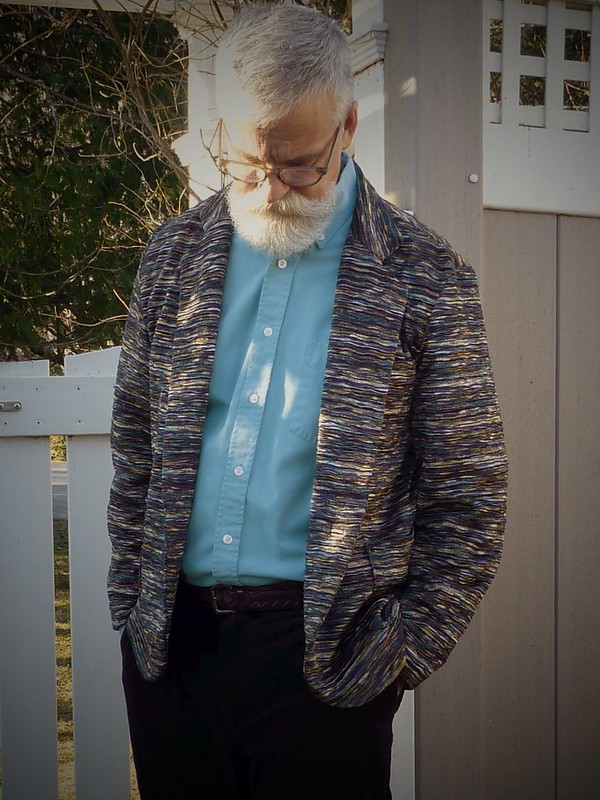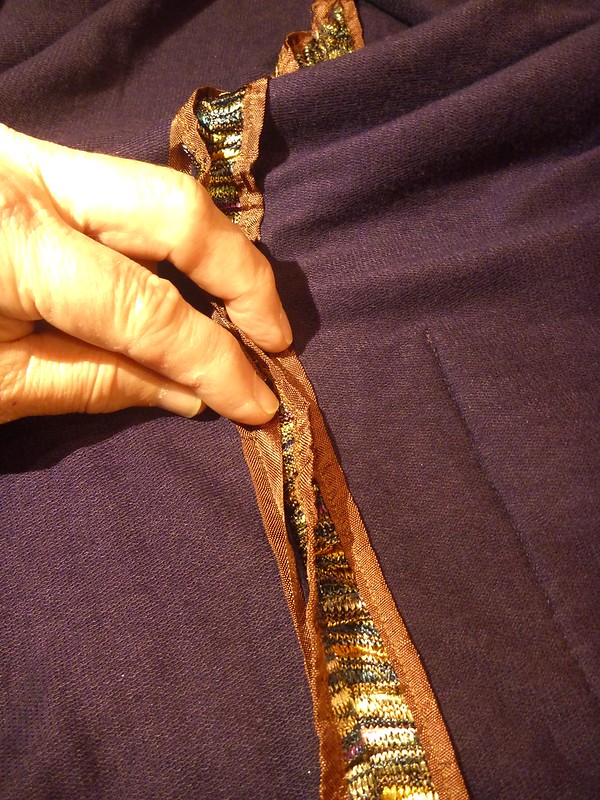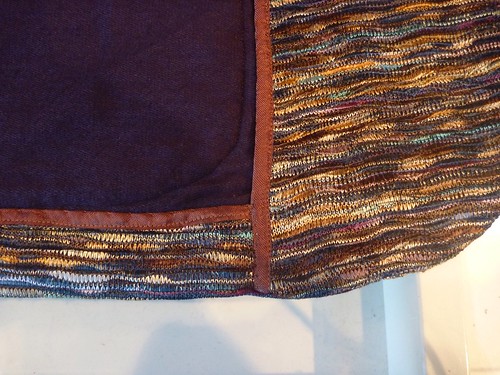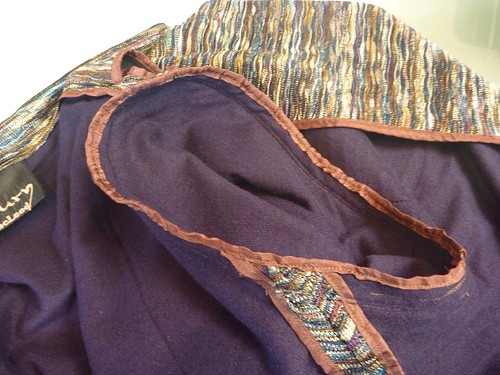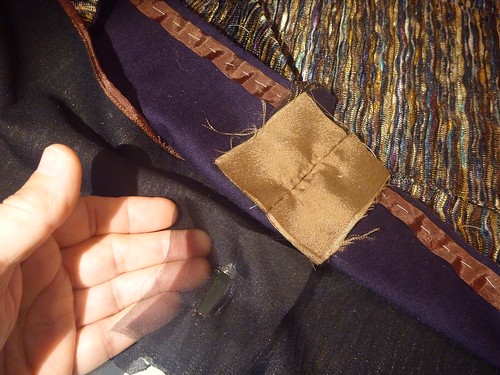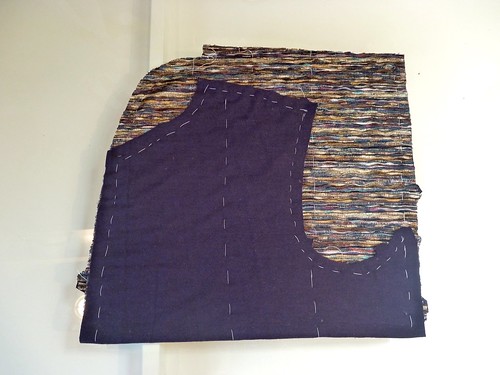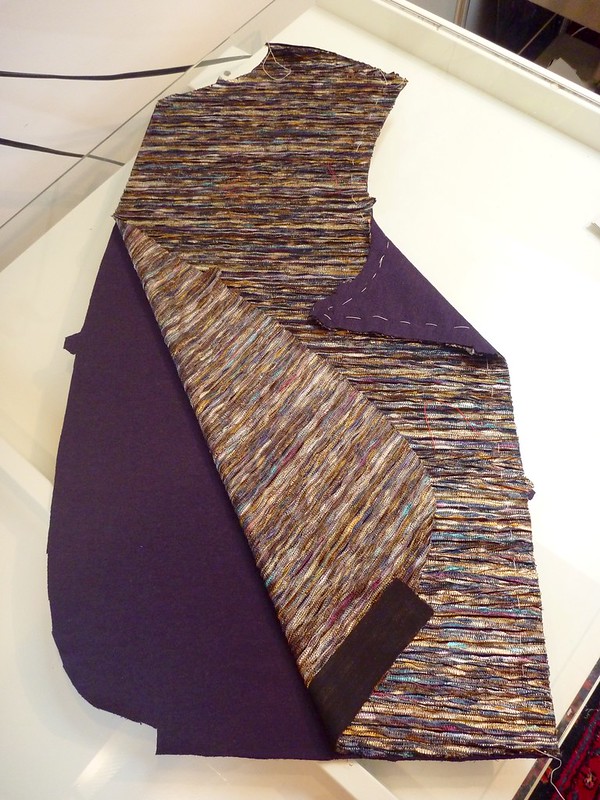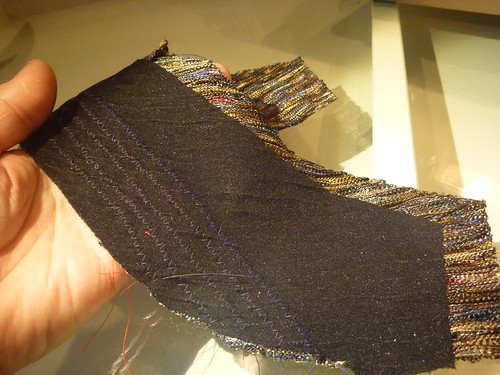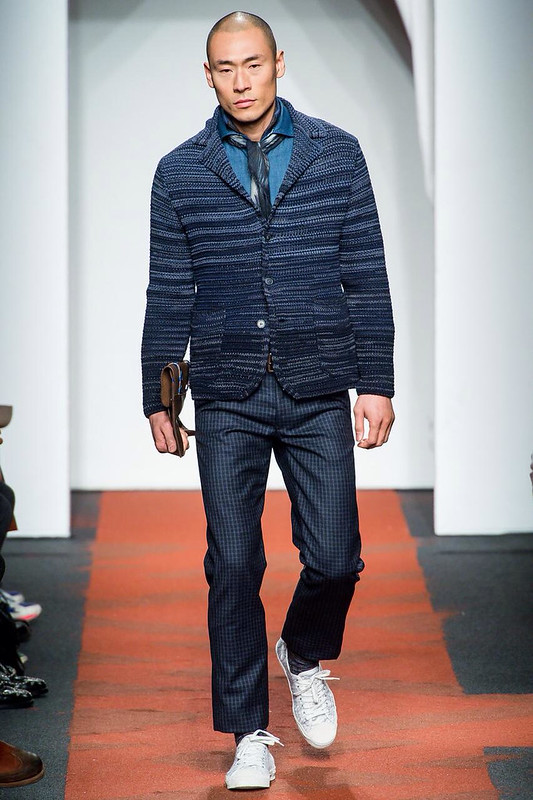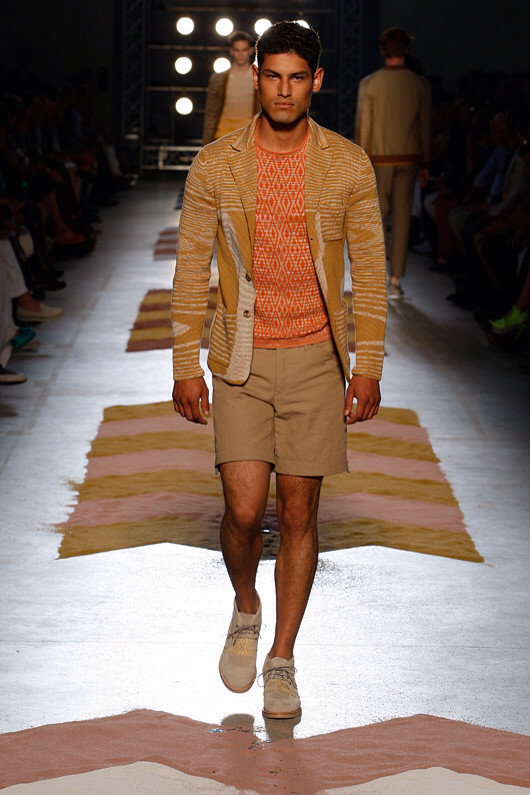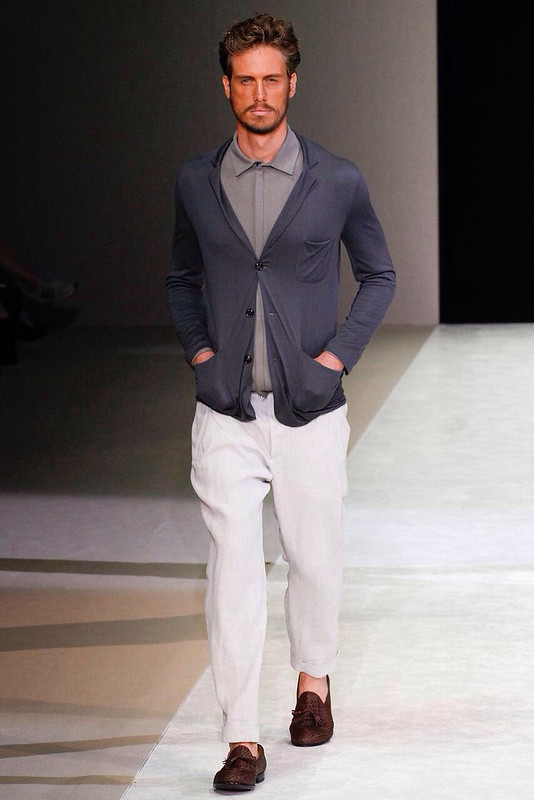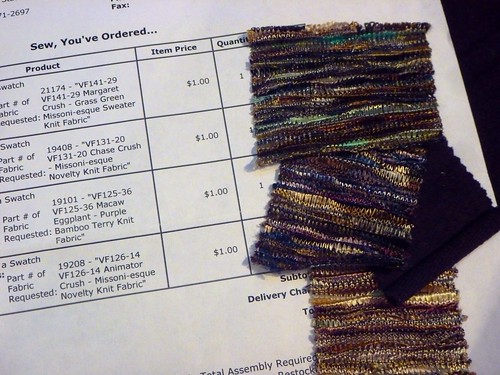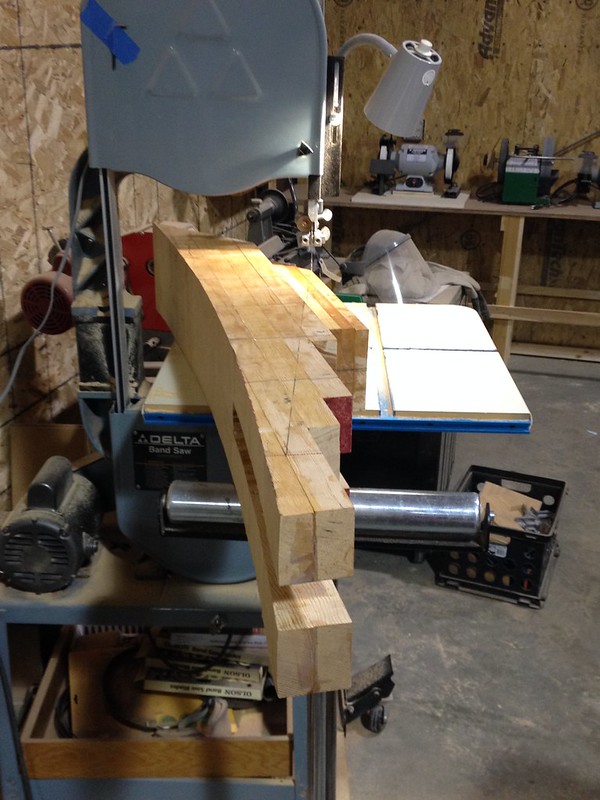Now that I've conquered my fear of knits, I decided to try Thread Theory's Finlayson Sweater. They have an entire sew-along tutorial on their website, so I won't bore you with a lot of construction details.
I like that this pattern can be made up two ways, with either a shawl collar or a hood. Personally, I'm not the hoodie and kangaroo pocket type, so I went with the shawl collar. LL Bean used to sell a rag wool sweater with a shawl collar. I think I wore it till it fell apart, so it's nice to have a replacement.
This is a lightweight acrylic knit that I picked up at Metro Textiles in NYC. Metro is one of those fabric haunts that's very "hit or miss", but can be worth the elevator ride up to the 9th floor (I think). The owner, Mr. Kashi, is very helpful and low pressure. While I was visiting he pointed me towards some gorgeous Japanese mens shirting, unfortunately not in colors that I would normally wear. One actually had a contrasting border running down the selvedge that could be used for inside the cuffs or neck band. Pretty cool, and silly cheap at something like $6/ Yd.
I went for this teal blue sweater knit, also $6.
I purchased the PDF version of the pattern. I work entirely off an ipad these days, and I struggled to find an app that would open the zip files. There are some seriously useless apps out there! I could get the directions, but not the actual pattern. Arrrgh!!! Matt and Morgan were SO supportive of my dilemma and pointed me in the right direction. (The solution was iZip BTW) Once that obstacle was surmounted it was clear sailing.
The pattern calls for an optional contrasting back neck facing. It's a good opportunity to use up some of those scraps that I just can't seem to throw away! It's also just a nice touch.
As you can see here my collar / placket isn't perfect. The pattern has separate upper and lower collar pieces, the upper collar being just slightly larger to allow for the turn of the cloth. I decided to understitch my collar to keep the seam out of sight. In retrospect I should have stopped the understitching about 4" from each end. That way it wouldn't show where the collar twists. Speaking of the collar, I'm not entirely convinced that the directions are right. Then again, I may be misinterpreting the diagrams. If you make this sweater, I'd spend some time playing with it so that your upper collar really ends up on the outside.
I "Snug Hugged" the raw edges inside. They could be zig zagged or serged, which would probably be a lot easier. I'm just sort of addicted to Snug Hug.
The neck seam can be covered with bias tape, twill tape or even shoelacing!
What else did I do? I shortened the arms by 2" and the body by 1". It went together easily and I will definitely be making it again, next time in significantly more luxurious materials. Stay tuned.
In the meantime I have a shirt I want to make.
As always, I wish you happy sewing!








